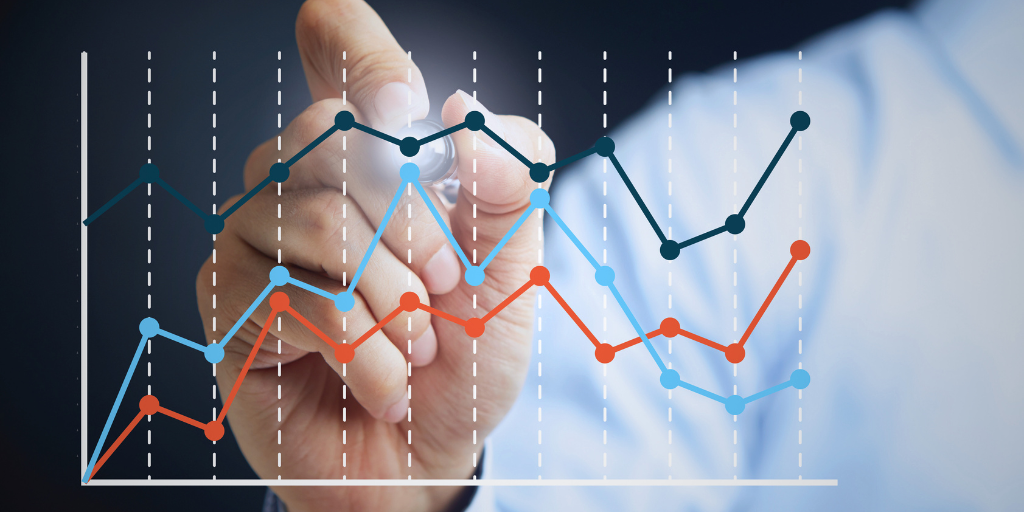In today’s data-driven world, organizations are constantly seeking ways to make sense of large volumes of information and extract valuable insights that can drive decision-making processes. While spreadsheets have long been a staple tool for analyzing data, they fall short when it comes to presenting complex information in an easily digestible format.
But why bother with visualizing data when you already have a perfectly good spreadsheet? Allow me to provide a simple example that illustrates the immense analytical potential that visuals bring to the table. Consider a spreadsheet filled with rows upon rows of numerical data. Your task is to identify the top performers within that dataset. With just a quick glance, it becomes evident that visually representing the data can significantly expedite this process.
The Limitations of Spreadsheets
Understanding the Tedious Task of Data Analysis
When faced with a large amount of data in a spreadsheet, sifting through countless rows and columns to uncover insights is both time-consuming and mentally taxing. Human brains are not naturally wired to efficiently analyze raw data presented in its tabular form. Without visual cues or aids, our cognitive abilities struggle to identify patterns, trends, and outliers buried within the numbers.
The Missing Link: Utilizing Visuals for Efficient Insights
Visual representations provide the missing link between the raw data and our ability to make sense of it. By transforming numerical values into intuitive visuals, such as charts, graphs, and diagrams, we tap into the innate analytical capabilities of our brain. Visualizations leverage size, shape, color, proportion, and proximity to present information in ways that align with how our brain processes and comprehends complex information.
How Our Brain Processes Information
Science tells us that our brains efficiently process information through our visual senses. Size, color, proportion, and proximity play pivotal roles in helping us understand and interpret data more effectively. When these elements are utilized in visualizations, our brain can effortlessly recognize and differentiate between data points, facilitating quicker analysis and comprehension.
Unleashing the Analytical Abilities through Visual Representations
Harnessing Size, Shape, and Color for Quick Insights
One of the key advantages of visualizing data is the ability to convey information through visual properties such as size, shape, and color. For example, a bar chart allows us to compare the performance of different categories by utilizing variations in the height or length of the bars. The use of different colors can further enhance understanding by indicating specific attributes or categories within the data. These visual cues enable us to quickly identify patterns, trends, and outliers without the need for manual calculation or intensive data analysis.
Enhancing Perception with Proportion and Proximity
Proportion and proximity are additional visual attributes that significantly enhance our perception and understanding of data. By leveraging proportionality in a visualization, we can accurately represent relative values and highlight differences between data points. For instance, a pie chart can visually represent the proportions of different segments within a whole, allowing us to compare their significance at a glance.
Similarly, the spatial arrangement of elements on a graph, such as clustering related data points together or using proximity to indicate relationships, can help uncover valuable insights. Scatter plots, network diagrams, and heatmaps are just a few examples of visualizations that leverage proximity to reveal connections, clusters, or correlations within complex datasets.
Benefits of Visualizing Data in Decision-Making
Streamlining Complex Data Sets
One of the primary benefits of visualizing data is its ability to simplify complexity. When faced with large and intricate datasets, visual representations condense information into a format that is easier to comprehend and interpret. Through clear and concise visuals, decision-makers can grasp the essence of the data swiftly, identifying key trends, anomalies, or areas of concern.
Visualizations provide an overview of complex relationships, enabling stakeholders to evaluate data from multiple angles simultaneously. Whether it’s tracking sales performance, monitoring website analytics, or assessing market trends, effective visualizations streamline the process of navigating through vast amounts of information, empowering decision-makers to make informed choices efficiently.
Enabling Better Communication and Collaboration
Data-driven insights are most impactful when shared across teams and departments within an organization. Spreadsheets, while informative, often lack the ability to effectively communicate the story behind the data. Visualizations, on the other hand, have the power to convey information in a more engaging and memorable manner, making it easier for diverse audiences to understand and retain key messages.
When presenting visualized data, decision-makers can capture the attention of their audience by highlighting significant findings or trends through compelling visuals. This not only facilitates better understanding but also encourages collaborative discussions and knowledge-sharing among team members. By enabling a shared understanding of complex information, data visualizations foster a culture of collaboration and drive more effective decision-making processes within organizations.
Enhancing Problem Solving and Predictive Analytics
Visualizations are powerful tools for problem-solving and predictive analytics. When faced with a challenge or seeking answers, visual representations can help identify patterns, outliers, or correlations that might go unnoticed in raw data form. With the aid of visual cues, decision-makers can identify potential bottlenecks, uncover hidden opportunities, and gain deeper insights into the factors that influence specific outcomes.
Moreover, interactive visualizations enable users to manipulate variables, simulate scenarios, and perform what-if analyses. By exploring different possibilities visually, decision-makers can assess the potential impact of their choices and make informed decisions based on robust analytical foundations. The ability to see cause-and-effect relationships unfold before their eyes empowers decision-makers to proactively tackle challenges and devise strategies backed by data-driven insights.
Techniques and Tools for Effective Data Visualization
Choosing the Right Visualization Method
The success of a data visualization largely depends on choosing the appropriate visualization method that aligns with the objectives and nature of the data being presented. There is no one-size-fits-all approach, as each dataset may require a tailored visualization technique to effectively communicate its underlying message. Some common types of data visualizations include:
- Bar charts and column charts
- Line graphs and area charts
- Pie charts and donut charts
- Scatter plots and bubble charts
- Heatmaps and treemaps
- Network diagrams and flowcharts
Selecting the right visualization method involves considering the type of data, the relationship between variables, and the insights you wish to convey. It’s important to strike a balance between simplicity and complexity, ensuring that the visualization is easy to understand while still capturing the nuances of the data.
Best Practices for Creating Clear and Engaging Visualizations
To create impactful visualizations, it’s crucial to follow best practices that ensure clarity and engagement. Here are some tips to keep in mind:
- Simplify complex data: Avoid overwhelming the audience with too much information. Focus on the key takeaways and present them in a concise manner.
- Use appropriate labels and legends: Clearly label axes, titles, categories, or any other relevant components. Provide explanations or legends when using colors, shapes, or symbols to represent specific variables.
- Choose suitable color palettes: Select colors that are visually appealing, harmonious, and support effective differentiation. Be mindful of colorblind accessibility guidelines to ensure inclusivity.
- Utilize interactive features: Incorporate interactivity where possible to allow users to explore the data further and uncover additional insights. This can include zooming, filtering, or toggling different views.
- Design for readability: Optimize font size, spacing, and contrast to ensure legibility. Consider the device or platform on which the visualization will be viewed and adjust accordingly.
- Test and iterate: Solicit feedback from end-users and stakeholders, iterating based on their input. Continuously refine your visualizations to enhance their effectiveness and impact.
Practical Applications of Data Visualization
Data Visualization in Business and Marketing
Data visualization plays a vital role in helping businesses make informed decisions across various domains. In marketing, visualizing customer behavior and preferences can provide insights into target audiences, enabling more targeted campaigns and personalized experiences. Sales teams can track performance metrics through clear dashboards, identifying areas for improvement and devising strategies to drive growth.
Business intelligence dashboards and reports leverage data visualization techniques to summarize key metrics, highlighting trends, patterns, and anomalies. By providing executives with real-time visual snapshots of their organization’s performance, data visualization empowers them to make timely, informed decisions that can impact the bottom line.
Data-Driven Storytelling in Journalism and Reporting
Journalists and reporters utilize data visualization as a means to tell compelling stories backed by evidence and analysis. Infographics, interactive charts, and maps enhance news articles by illustrating complex issues or presenting statistical information in an engaging manner. Data journalism relies on effective data visualization techniques to help readers comprehend intricate datasets quickly and grasp the implications within.
Data-driven storytelling allows journalists to uncover newsworthy insights and convey information more effectively. Visualizations not only capture the attention of readers but also provide context and support key points within journalistic narratives, fostering a deeper understanding and engagement among audiences.
Visualizing Data in Research and Academia
In the realm of research and academia, data visualization is crucial for analyzing and disseminating findings. Researchers use visualizations to explore patterns, trends, and relationships within their data, gaining valuable insights that drive further investigations. These visual representations aid in communicating complex research concepts, making academic work accessible to a broader audience.
Educational institutions leverage data visualization to enhance teaching methodologies and facilitate student learning. Visualized data helps students grasp complex concepts and reinforce their understanding through interactive explorations. This fosters critical thinking skills and equips students with tools to interpret and present data effectively in their own research endeavors.
Conclusion: Embracing the Power of Data Visualization
As we have explored the power and potential of visualizing data, it becomes clear that spreadsheets alone fall short when it comes to unlocking analytical abilities. The human brain is wired to process visual cues efficiently, allowing us to glean valuable insights from complex datasets that might otherwise remain hidden within rows and columns of raw data.
By harnessing size, shape, color, proportion, and proximity, visualizations transform data into easily understandable and actionable insights. Decision-makers benefit from streamlined analysis, improved communication, and enhanced problem-solving capabilities when armed with visually represented information.
In an era where data reigns supreme, organizations across industries must recognize the value of visualizing data as a powerful tool for effective decision-making. By embracing this analytical technique, businesses can leverage their data assets to drive innovation, streamline operations, and gain a competitive edge in the market.
Key Takeaways
- Visual representations provide the missing link between raw data and our ability to make sense of it efficiently.
- Size, shape, color, proportion, and proximity play pivotal roles in how our brain processes and comprehends complex information.
- Data visualization streamlines analysis, facilitates better communication and collaboration, and enhances problem-solving and predictive analytics.
- Choosing the right visualization method and following best practices are essential for creating clear and engaging visualizations.
- Practical applications of data visualization span various domains, including business and marketing, journalism and reporting, and research and academia.
Visualizing data goes beyond making information aesthetically pleasing; it is about empowering individuals and organizations to unlock deeper insights that can inform strategic decisions. Whether you’re analyzing sales performance, conducting research, or seeking to communicate complex ideas effectively, embracing the power of data visualization opens doors to new possibilities.
So, why bother with visualizing data? Because by doing so, you equip yourself with the means to tap into your brain’s inherent analytical abilities, fostering a deeper understanding of the world around you. It’s time to unlock the potential hidden within your datasets and unleash the power of data visualization.




